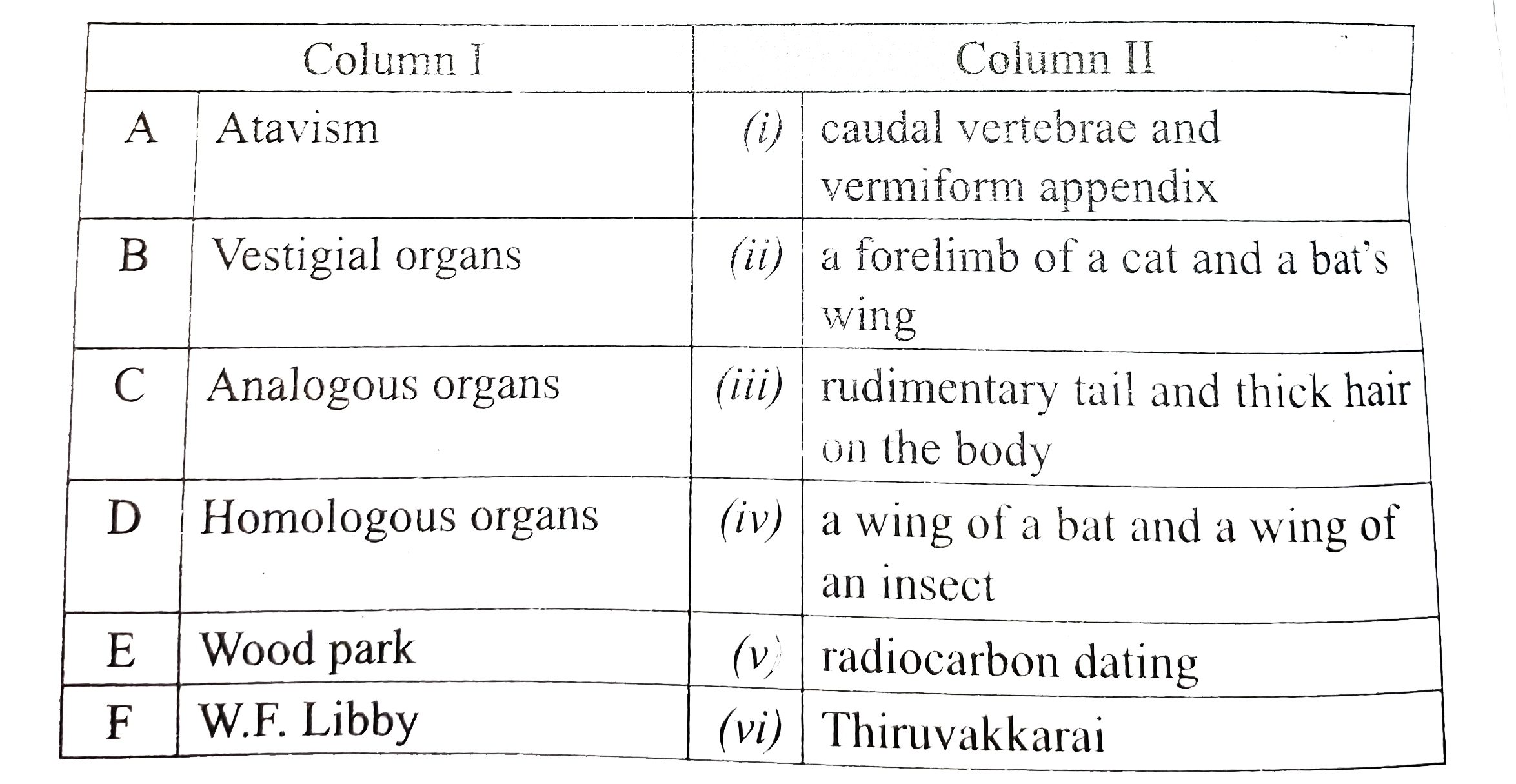The homologous organs look similar and perform similar functions but they have different origin and developmental pattern.Solution in Tamil
False – The alogous organs look similar and developmental pattern.
Topper's Solved these Questions
- ORIGIN AND EVOLUTION OF LIFEBook:PREMIERS PUBLISHERSChapter:ORIGIN AND EVOLUTION OF LIFEExercise:Textbook Evaluation (IV. Match the following)
Explore 1 Video
- ORIGIN AND EVOLUTION OF LIFEBook:PREMIERS PUBLISHERSChapter:ORIGIN AND EVOLUTION OF LIFEExercise:Textbook Evaluation (V. Answer in a word or sentence.)
Explore 3 Videos
- ORIGIN AND EVOLUTION OF LIFEBook:PREMIERS PUBLISHERSChapter:ORIGIN AND EVOLUTION OF LIFEExercise:Textbook Evaluation (II. Fill in the blanks.)
Explore 4 Videos
- NERVOUS SYSTEMBook:PREMIERS PUBLISHERSChapter:NERVOUS SYSTEMExercise:OTHER IMPORTANT QUESTIONS & ANSWER (IX. Long Answer Question:)
Explore 3 Videos
- PLANT ANATOMY AND PLANT PHYSIOLOGY Book:PREMIERS PUBLISHERSChapter:PLANT ANATOMY AND PLANT PHYSIOLOGY Exercise:OTHER IMPORTANT QUESTIONS & ANSWER(Higher Order Thinking Skills (HOT)):
Explore 3 Videos
Similar Questions
Match the following columns

View SolutionA human hand, a front leg of a cat, a front flipper of a whale and a bat's wing look dissimilar and adapted for different functions. What is the name given to these organs ?
View SolutionThe characters developed by the animals during their life time, in response to the environmental changes are called . . . . . . . . .
View SolutionClassify peripheral nervous based on the nerves arising from the brain and the spinal cord.
View SolutionThe cells of endodermis show band like thickening on their radial and inner tangential walls called casparian strips. Why?
View SolutionAssertion: Thoms and tendrislls of Bougainvillea and Cucurbita represent homology. Reason: Homologous organs have similar functions but are different in their structural details and origin.
View SolutionOragns that have different embryotic origin but perform similar functions are
View SolutionAssertion : Homologous organs have common ancestry and similar function. Reason : Analogous organs have unlike origin and dissimilar function.
View SolutionThe organs which perform similar functions but have different basic structure are called :
View SolutionOrgans which have similar origin and developmental plan, but different functions are called
View SolutionThe homologous organs look similar and perform similar functions but they have different origin and developmental pattern.
View SolutionOrgans which differ in their origin and development but perform similar function are
View SolutionAssertion: Thorns and tendrils of Bougainvillea and Cucurbita represent homology. Reason: Homologous organs have similar functions but are different in their structural details and origin.
View SolutionWhat are the organs of similar function but of different pattern of origin and development called?
View SolutionOrgans which have similar origin and developmental plan, but different functions are called
View SolutionOrgans which have similar origin and developmental plan, but different functions are called
View Solution